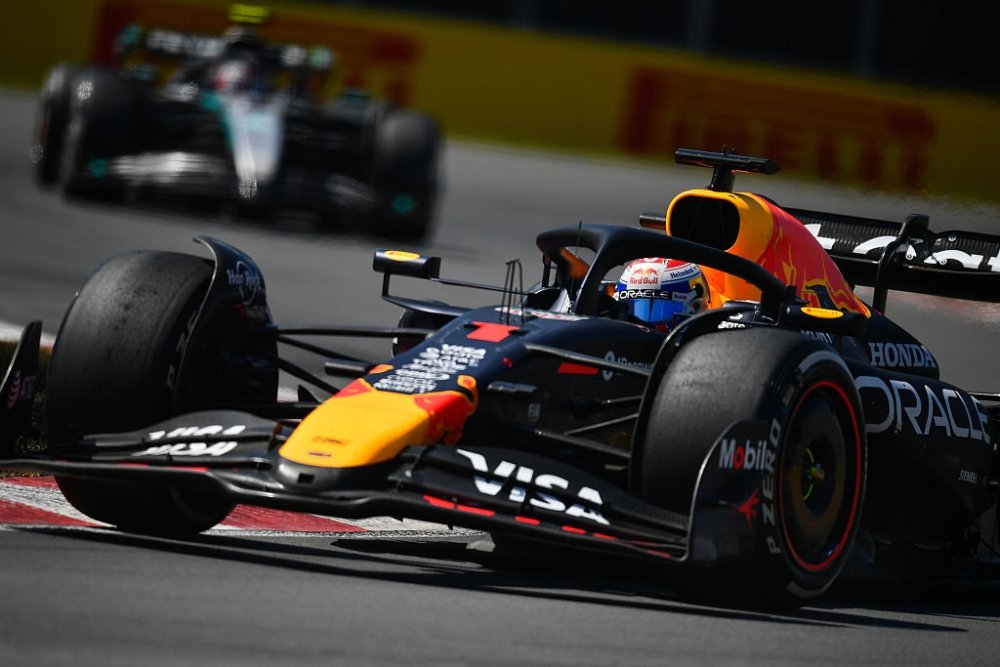Max Verstappen’s Race Strategy and Performance at the Canadian Grand Prix
In the thrilling atmosphere of the Canadian Grand Prix, Max Verstappen showcased his racing acumen by strategically managing a defensive race while also executing an aggressive game plan. His main goal was to thwart Mercedes’ efforts to claim a one-two finish, which added an extra layer of intensity to the competition.
Early Race Dynamics
The race kicked off with George Russell taking the lead from pole position. Verstappen quickly found himself in a challenging position as he sought to close the gap and apply pressure on Russell during the early laps. However, as the race progressed, Verstappen experienced a decline in pace and faced significant competition from Kimi Antonelli, especially during his initial pit stop. The dynamics of the race were fluid, with positions changing rapidly as drivers navigated tire strategies and pit timings.
Pit Stop Strategy
During the critical second phase of pit stops, Verstappen encountered Antonelli once again as they exited the pits. Nevertheless, he managed to maintain his position, which was crucial for his overall standing in the race. Verstappen later reflected on the race, stating that securing second place felt like the best outcome achievable under the circumstances.
Tire Management Challenges
Verstappen noted that managing tire performance was a significant challenge throughout the race. He reported considerable struggle with tire degradation during the first two stints. This degradation forced him to adopt a more defensive driving style. There were moments when Antonelli was poised to overtake him, especially before their respective pit stops. Despite these challenges, Verstappen’s team successfully executed a strategy that allowed him to maintain his position.
Final Stint Performance
As the race progressed into its final stint, Verstappen expressed relief about improving tire performance with a lighter fuel load. This adjustment allowed him to find a bit more pace, which was encouraging given the earlier struggles with tire wear. He characterized his driving approach as a blend of offense and defense—attacking through strategic maneuvers while simultaneously defending against competitors behind him.
Reflections on Race Strategy
In his post-race comments, Verstappen emphasized that despite the difficulties, the team had optimized their performance as much as possible. He acknowledged that throughout the race, he never felt completely secure in holding onto second place. Yet, he credited the team’s strategic decisions as being effective in a challenging environment.
Championship Points and Future Performance
Verstappen’s performance in the Canadian Grand Prix allowed him to score valuable championship points, particularly as Oscar Piastri finished in fourth place and Lando Norris faced an early retirement. This outcome was significant for Verstappen, as it helped him mitigate potential losses in the championship standings.
However, Verstappen was candid about the need for Red Bull to enhance their car’s performance to consistently outscore competitors like McLaren. He expressed hope that the team could replicate the positive feelings he experienced with the car at the Canadian circuit in future races. Despite having a decent weekend, he stressed the importance of improving overall performance to remain competitive throughout the season.
The Road Ahead for Red Bull Racing
Looking towards the upcoming races, Verstappen recognized that while the Canadian Grand Prix offered a glimpse of potential, the team needed to develop further advancements to remain competitive. He observed that McLaren was not at their usual strength during this race, which provided Red Bull with a slight advantage. However, he remained realistic about the challenges ahead and the need for ongoing improvements.
Conclusion
In summary, Max Verstappen’s performance at the Canadian Grand Prix was marked by a combination of strategic defensive driving and aggressive race tactics. The challenges he faced with tire degradation and competition from other drivers highlighted the complexities of modern Formula 1 racing. As he looks ahead, the focus remains on enhancing Red Bull’s car performance to ensure they can continue to compete at the highest levels throughout the season.
